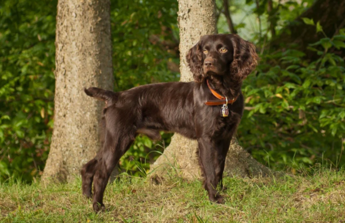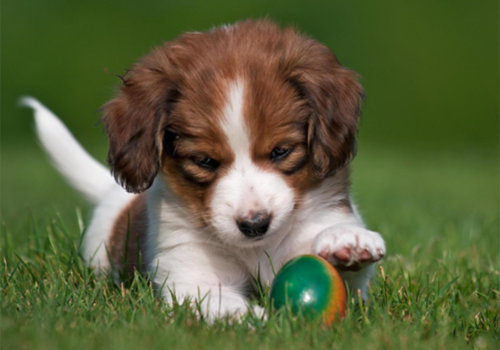The Nederlandse Kooikerhondje is a very old breed, appearing in paintings by the Dutch masters back into the late Middle Ages. The breed was used in the “Eendenkooi” the manmade duck-trapping pond systems, beginning prior to the invention of gunpowder. These “Duck Decoys” – as they were called in English – are not to be confused with carved wooden faux ducks, but were instead hand-dug ponds ranging from 3 to 10 acres in size. The breed was also associated with the founder of the Dutch Monarchy, Prince William of Oranje, whose “Kooiker” Kuntz was credited with saving the Prince’s life when assassins sought to kill him.
The breed began to diminish after the First World War as better fowling guns meant hunters could shoot ducks more readily. The Duck Decoys were not as profitable, the effort to maintain them less desirable and with their disappearance so too came the decline of the little orange-red and white dog used to lure the ducks.
In late 1939, as part of her silent resistance to the occupation of the Netherlands, the Baronesse von Hardenbroek van Ammerstol set out to preserve the breed. She sent peddlers who stopped at her estate off with a black and white photograph of the breed and a snippet of fur. When the peddler spotted a dog that seemed to match the Baronesse’s requirements, she then took to her own bicycle to visit the dog. In this way, she found Tommy, a bitch from the farthest north province in the Netherlands who became the foundation. The Baronesse bred 52 litters under the name Walhalla from 1942 to 1976. The Dutch parent club was organized in 1967, and the breed was officially recognized by the Raad van Beheer (the Dutch equivalent of AKC) in 1971.











